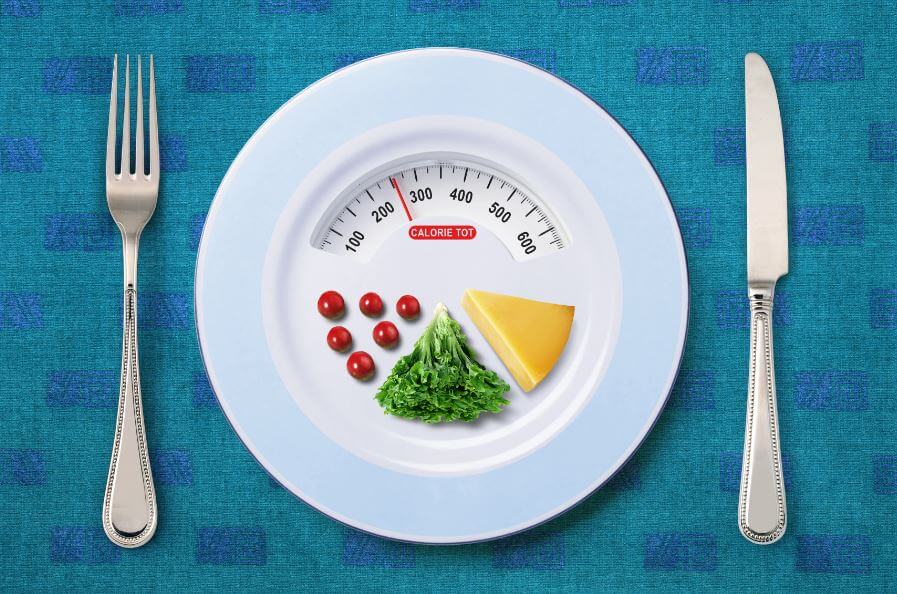Calories Burned Varies According to the Time of Day

A person’s metabolism depends on their circadian rhythm. That’s why it’s hypothesized that the amount of calories burned varies according to the time of the day. As a result of these studies, we can understand the new ways we gain and lose weight.
A study published by the scientific journal Current Biology gave an account of this interesting finding. According to their research, metabolic rates depend on cycles of rest and activities. What conclusions can we draw from this information?
Calories burned or obesity: it’s not just what we eat
The traditional approach states that we should take care of what we eat. Although this is important, it’s now clear that what we eat isn’t the only variable at play. The truth is that we also have to pay attention to when we eat and when we rest.
Many nutritionists and trainers have been saying this for years. This research may also prove some nutrition principles such as how bad it is to eat before going to bed.
In any case, the research also supports the idea that metabolism depends mainly on our habits. A person’s health is deeply intertwined with their customs. That’s why it’s important to have healthy habits.
Calories burned: revealing experiment
Researchers at the Boston Women’s Hospital conducted a very interesting experiment. They studied seven people in a special laboratory which had no clocks or windows. As a result, patients couldn’t recognize whether it was day or night.
The experiment consisted of changing the rest and eating routines of the participants. Their regular schedules were delayed by four hours.

At the end of the study, the results indicated that we spend less energy in the phase that our bodies recognize as the dawn. At this time, the abdomen is at a much cooler temperature than it is during the rest of the day. They also concluded that more calories are burned at the end of the afternoon.
More conclusive evidence
According to researchers, the respiratory rate is also affected by the circadian rhythm. In fact, respiratory rate is a variable that is examined in order to measure metabolic rate.
A person’s respiratory rate is an indicator that allows us to see their macronutrient expenditure. According to the researches, this index was lower in the afternoon and higher in the morning.
Although there’s been a lot of new research, there’s still much to explore regarding this issue. It’s still unknown how other factors such as appetite intervene in caloric processes.
According to the researchers, the regularity and amount of sleep is another important variable.
What do calories burned have to do with your exercise routine?
In principle, it can be thought that, since more calories are burned during the afternoon, the afternoon may be the most convenient time to exercise. However, we must keep in mind that there’s still not enough research to determine the best time to exercise.
In the same way, the time we eat may start to play a fundamental role in weight-loss. The difference between afternoons and evenings may be as much as 130 calories.
The relationship between the circadian cycle and calories proves that exercise is not the only variable we should pay attention to.

Some revealing facts about burning calories
The researchers from Boston’s Women’s Hospital were able to make the following key discoveries. However, it’s important to keep in mind that further tests are needed in order to make conclusions.
- The period in which we burn the most calories is between 5 pm and 7 pm.
- When it comes to energy expenditure, the metabolic rate during rest is between 60 to 70 percent.
So in conclusion, does the time of day affect the amount of calories burned? In principle, it does have a small influence. The topic is still being studied and we’re sure we’ll have some more details soon.
A person’s metabolism depends on their circadian rhythm. That’s why it’s hypothesized that the amount of calories burned varies according to the time of the day. As a result of these studies, we can understand the new ways we gain and lose weight.
A study published by the scientific journal Current Biology gave an account of this interesting finding. According to their research, metabolic rates depend on cycles of rest and activities. What conclusions can we draw from this information?
Calories burned or obesity: it’s not just what we eat
The traditional approach states that we should take care of what we eat. Although this is important, it’s now clear that what we eat isn’t the only variable at play. The truth is that we also have to pay attention to when we eat and when we rest.
Many nutritionists and trainers have been saying this for years. This research may also prove some nutrition principles such as how bad it is to eat before going to bed.
In any case, the research also supports the idea that metabolism depends mainly on our habits. A person’s health is deeply intertwined with their customs. That’s why it’s important to have healthy habits.
Calories burned: revealing experiment
Researchers at the Boston Women’s Hospital conducted a very interesting experiment. They studied seven people in a special laboratory which had no clocks or windows. As a result, patients couldn’t recognize whether it was day or night.
The experiment consisted of changing the rest and eating routines of the participants. Their regular schedules were delayed by four hours.

At the end of the study, the results indicated that we spend less energy in the phase that our bodies recognize as the dawn. At this time, the abdomen is at a much cooler temperature than it is during the rest of the day. They also concluded that more calories are burned at the end of the afternoon.
More conclusive evidence
According to researchers, the respiratory rate is also affected by the circadian rhythm. In fact, respiratory rate is a variable that is examined in order to measure metabolic rate.
A person’s respiratory rate is an indicator that allows us to see their macronutrient expenditure. According to the researches, this index was lower in the afternoon and higher in the morning.
Although there’s been a lot of new research, there’s still much to explore regarding this issue. It’s still unknown how other factors such as appetite intervene in caloric processes.
According to the researchers, the regularity and amount of sleep is another important variable.
What do calories burned have to do with your exercise routine?
In principle, it can be thought that, since more calories are burned during the afternoon, the afternoon may be the most convenient time to exercise. However, we must keep in mind that there’s still not enough research to determine the best time to exercise.
In the same way, the time we eat may start to play a fundamental role in weight-loss. The difference between afternoons and evenings may be as much as 130 calories.
The relationship between the circadian cycle and calories proves that exercise is not the only variable we should pay attention to.

Some revealing facts about burning calories
The researchers from Boston’s Women’s Hospital were able to make the following key discoveries. However, it’s important to keep in mind that further tests are needed in order to make conclusions.
- The period in which we burn the most calories is between 5 pm and 7 pm.
- When it comes to energy expenditure, the metabolic rate during rest is between 60 to 70 percent.
So in conclusion, does the time of day affect the amount of calories burned? In principle, it does have a small influence. The topic is still being studied and we’re sure we’ll have some more details soon.
All cited sources were thoroughly reviewed by our team to ensure their quality, reliability, currency, and validity. The bibliography of this article was considered reliable and of academic or scientific accuracy.
- Kirsi-Marja Zitting; Nina Vujovic; Robin K. Yuan; Jonathan S. Williams; Charles A. Czeisler; Jeanne F. Duffy. 2008. Human Resting Energy Expenditure Varies with Circadian Phase. https://doi.org/10.1016/j.cub.2018.10.005
- Programa Nacional de Prevención de la Diabetes. La balanza de las calorías. Extraído de: https://www.cdc.gov/diabetes/prevention/pdf/spanish/sp_handout_session7.pdf
- Norman MacMillan K. 2008. Ejercicio y quema de grasa. Escuela de Educación Física, Pontificia Universidad Católica de Valparaíso. Chile. Extraído de: https://scielo.conicyt.cl/pdf/rchnut/v36n1/art08.pdf
This text is provided for informational purposes only and does not replace consultation with a professional. If in doubt, consult your specialist.








